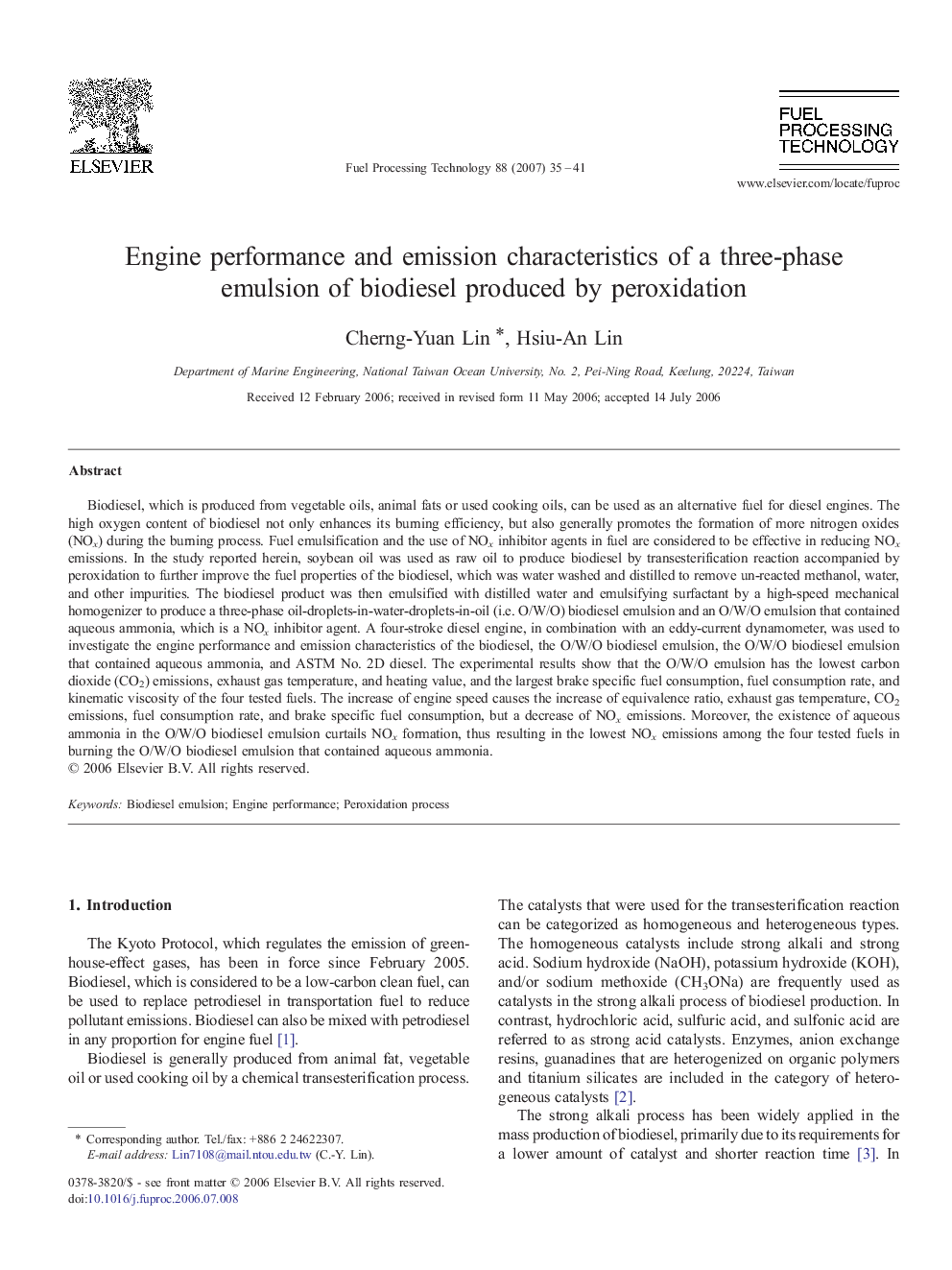| کد مقاله | کد نشریه | سال انتشار | مقاله انگلیسی | نسخه تمام متن |
|---|---|---|---|---|
| 211348 | 461757 | 2007 | 7 صفحه PDF | دانلود رایگان |

Biodiesel, which is produced from vegetable oils, animal fats or used cooking oils, can be used as an alternative fuel for diesel engines. The high oxygen content of biodiesel not only enhances its burning efficiency, but also generally promotes the formation of more nitrogen oxides (NOx) during the burning process. Fuel emulsification and the use of NOx inhibitor agents in fuel are considered to be effective in reducing NOx emissions. In the study reported herein, soybean oil was used as raw oil to produce biodiesel by transesterification reaction accompanied by peroxidation to further improve the fuel properties of the biodiesel, which was water washed and distilled to remove un-reacted methanol, water, and other impurities. The biodiesel product was then emulsified with distilled water and emulsifying surfactant by a high-speed mechanical homogenizer to produce a three-phase oil-droplets-in-water-droplets-in-oil (i.e. O/W/O) biodiesel emulsion and an O/W/O emulsion that contained aqueous ammonia, which is a NOx inhibitor agent. A four-stroke diesel engine, in combination with an eddy-current dynamometer, was used to investigate the engine performance and emission characteristics of the biodiesel, the O/W/O biodiesel emulsion, the O/W/O biodiesel emulsion that contained aqueous ammonia, and ASTM No. 2D diesel. The experimental results show that the O/W/O emulsion has the lowest carbon dioxide (CO2) emissions, exhaust gas temperature, and heating value, and the largest brake specific fuel consumption, fuel consumption rate, and kinematic viscosity of the four tested fuels. The increase of engine speed causes the increase of equivalence ratio, exhaust gas temperature, CO2 emissions, fuel consumption rate, and brake specific fuel consumption, but a decrease of NOx emissions. Moreover, the existence of aqueous ammonia in the O/W/O biodiesel emulsion curtails NOx formation, thus resulting in the lowest NOx emissions among the four tested fuels in burning the O/W/O biodiesel emulsion that contained aqueous ammonia.
Journal: Fuel Processing Technology - Volume 88, Issue 1, January 2007, Pages 35–41